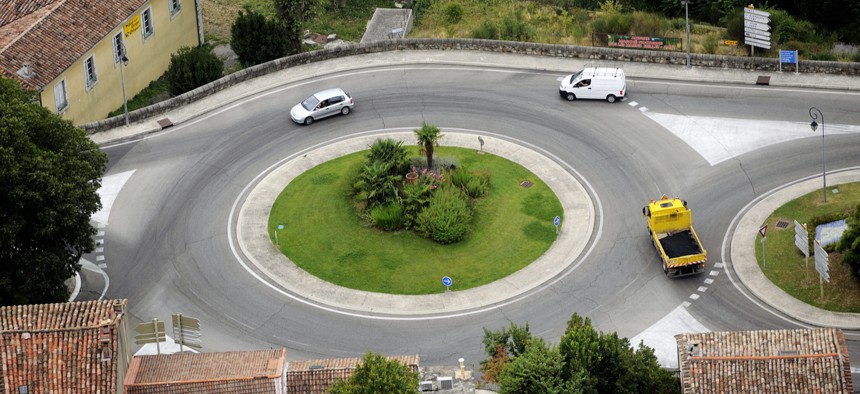Do Roundabouts Make Drivers Better or Worse? Transportation Wants to See the Data.

Gilles Paire/Shutterstock.com
The National Highway Traffic Safety Administration wants help sorting data on how drivers behave in certain traffic patterns.
Roundabouts—the traffic management construction that is popular overseas but so often infuriating for American drivers—are designed to keep the flow of traffic moving through intersections. But do they make drivers safer?
The National Highway Traffic Safety Administration is analyzing how certain traffic management techniques affect driver behavior. The Transportation Department component issued a solicitation for data analytics services to assist by compiling data sets on driver reactions and positioning when traveling through roundabouts.
The project, per a solicitation posted to beta.SAM.gov, will be split into two parts. The first will focus on collecting data on “trips that traverse roundabouts,” while the second focuses on “specific behaviors in the trip data from Task 1.” Those behaviors will include things like the driver’s head position, among other factors.
At this point, the safety administration is only looking for analytics services, as most of the data has already been collected through the Second Strategic Highway Research Project, or SHRP2. The SHRP2 program collected data through more than 100 research projects using naturalistic driving research principles, which recorded drivers and their surrounding environments on routine trips through non-invasive techniques.
For this latest behavioral study, the NHTSA contractor will scan the existing data sets to identify relevant trips—Task 1—and then identify pertinent behaviors—Task 2.
Responses are due by 5 p.m. Jan. 28.
NEXT STORY: GAO Calls Out IRS’ Taxpayer Experience Issues






